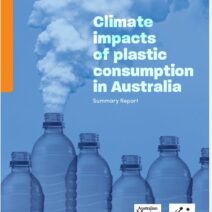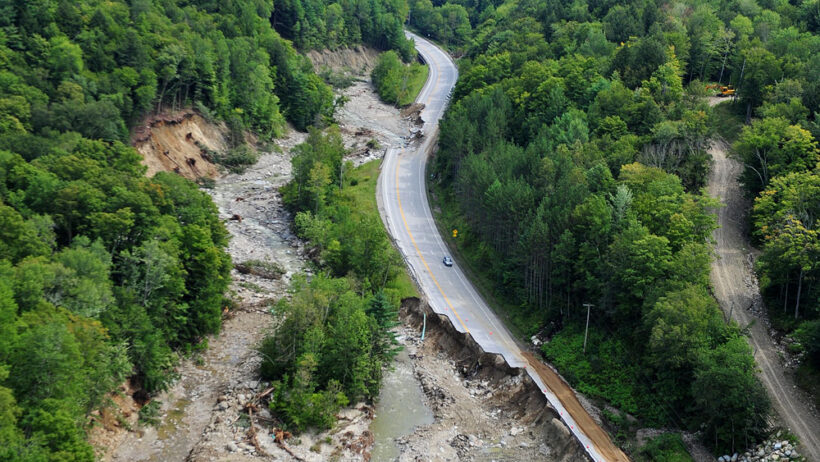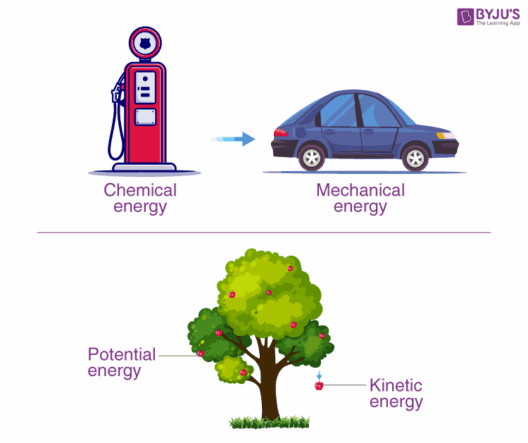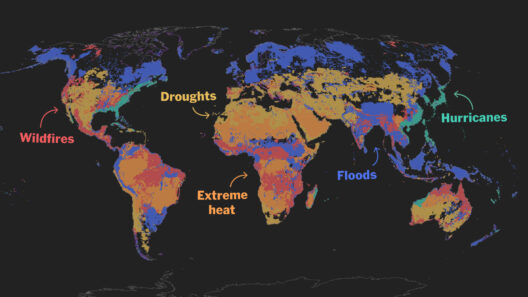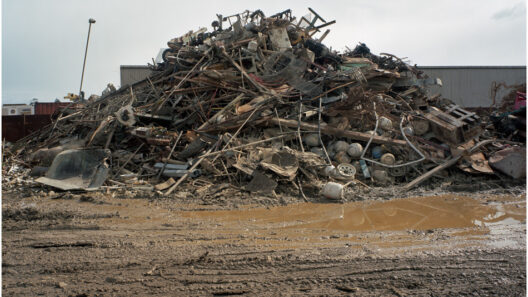Hurricanes have long been a formidable force of nature, but in recent years, they have taken on an alarming intensity fueled by climate change. As global temperatures rise, scientists and meteorologists are uncovering the intricate connections between anthropogenic emissions and the ferocity of tropical storms. This exploration unveils a disconcerting narrative that redefines our understanding of hurricanes and their implications for both human and ecological systems.
To comprehend this evolving paradigm, one must first grasp the mechanics behind hurricane formation. These colossal storms originate over warm ocean waters, which serve as their primary energy source. When sea surface temperatures increase, so does the intensity of hurricanes. A temperature rise of merely one degree Celsius can significantly augment the storm’s strength. Scientists have observed a troubling trend; the average sea surface temperatures in many regions are steadily climbing due to global warming, setting the stage for hurricanes that are not just stronger but potentially more frequent.
The role of humidity in storm dynamics cannot be underestimated. Warmer air holds more moisture, which contributes to higher precipitation rates during storms. According to studies, the maximum rainfall associated with hurricanes is projected to increase by approximately 7% for every additional degree Celsius in temperature. This surge in rainfall can result in devastating flooding, challenging the resilience of coastal infrastructure and ecosystems alike. The consequences of such deluges are not merely academic; entire communities can be displaced, leading to enduring socioeconomic repercussions.
Furthermore, the heightened strength of these storms is exacerbated by the phenomenon known as “hurricane rapid intensification.” This process, characterized by a swift increase in a storm’s maximum sustained winds, has become more prevalent in the context of climate change. While the exact mechanisms remain an area of intense research, the correlation between rising sea temperatures and rapid intensification is undeniable. This unpredictability poses significant challenges for emergency preparedness and response strategies, as communities grapple with the unpredictability and ferocity of storms that were once more manageable.
Interestingly, the effects of climate change on hurricane behavior also extend to their geographical distribution. Historically, tropical cyclones have been confined to specific latitudinal bands. However, studies suggest a potential shift, with hurricanes appearing in regions previously deemed inhospitable due to cooler ocean temperatures. This expansion broadens the risk landscape, exposing new coastal communities to the threats posed by hurricanes. Such shifts demand a proactive approach to disaster readiness that recognizes the evolving nature of these storms.
The societal ramifications are profound and multi-tiered. Economic vulnerability is heightened in regions with limited resources to prepare for or recover from powerful storms. For instance, low-lying areas are at increased risk of inundation, leading to loss of property, livelihoods, and even lives. Furthermore, the psychological toll on those affected by hurricanes cannot be overstated; the trauma of experiencing a catastrophic storm can resonate for generations, fostering a cycle of instability and anxiety.
Amidst the urgency of these challenges lies an opportunity for innovation and resilience. Architects and urban planners are reimagining the built environment to withstand more powerful storms. Through advances in engineering, communities can design structures that defy the destructive forces of hurricanes, incorporating features such as elevated foundations, storm-resistant windows, and improved drainage systems. These adaptations not only mitigate damage during storms but also promote long-term sustainability.
In addition to infrastructure enhancements, science and technology are stepping up to the plate in the form of predictive modeling and early warning systems. These innovations allow communities to anticipate severe weather events with increased accuracy, affording residents the vital minutes needed to evacuate or prepare. By integrating artificial intelligence and machine learning into meteorological models, scientists can refine their predictions of hurricane paths and intensities, creating a more informed public that can better navigate these perilous storms.
Engaging with climate change at the grassroots level can spark widespread community action. Educational initiatives that promote awareness and understanding of the complexities of climate science can empower individuals to advocate for sustainability. From reducing carbon footprints to supporting renewable energy initiatives, personal responsibility plays a crucial role in confronting the climate crisis. Collective efforts, no matter how small, contribute to a larger movement aimed at mitigating the factors that intensify hurricane activity.
Lastly, it is vital to foster a global dialogue on climate action. As hurricanes continue to wreak havoc across the globe, the responsibility to combat climate change transcends national borders. International cooperation is paramount, as many of the world’s most vulnerable populations lack the resources to adapt to climate-related challenges. By investing in greener infrastructure, supporting developing nations, and committing to reduced emissions, we can work towards a future where humanity is better poised to weather the storms—both literally and metaphorically.
In conclusion, the interplay between hurricanes and climate change presents a complex yet pivotal challenge. Understanding the science behind hurricanes and their increasing intensity invites a reflexive re-evaluation of our societal structures and policies. The narrative is not purely one of despair; it is also one of resilience, innovation, and collective action. As hurricanes unleash their might, let us harness our spirit of ingenuity to build a more sustainable and prepared future, ensuring that we are not merely passive victims of nature’s fury, but active participants in shaping the world to come.
